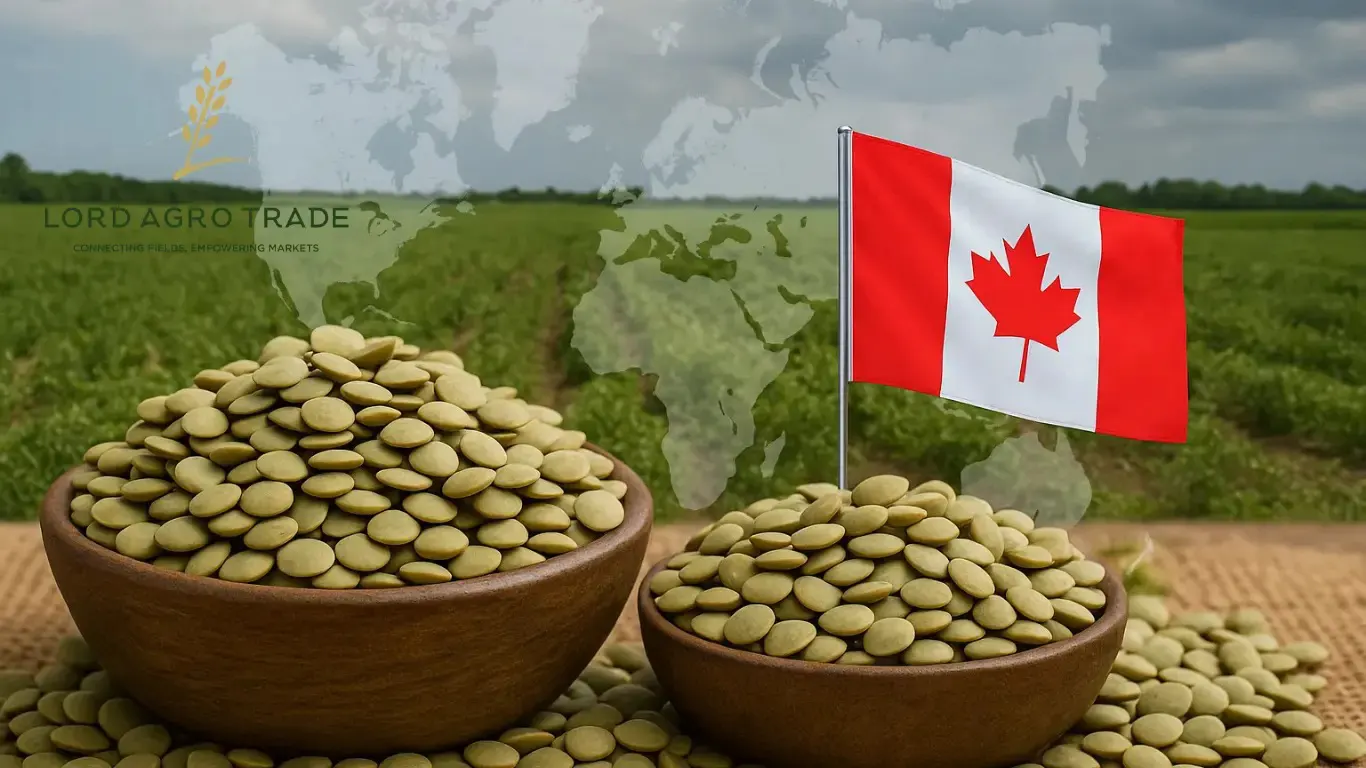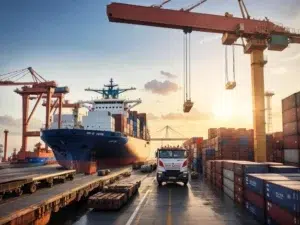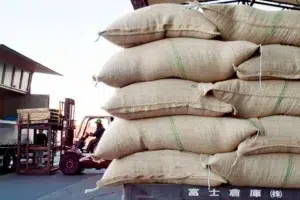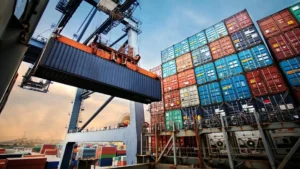Gulfood
17 To 21 FEB 2025 | DUBAI WORLD TRADE CENTRE
We’re excited to see you at Gulfood 2025!
Gulfood
17 To 21 FEB 2025 | DUBAI WORLD TRADE CENTRE
We’re excited to see you at Gulfood 2025!


FOB price lentils Canada is one of the most crucial indicators in the international trade of agricultural commodities, especially when dealing with high-quality pulses such as Canadian lentils. Understanding how FOB prices are determined, what factors influence them, and how traders can optimize their offers is essential for anyone involved in global food supply chains. This comprehensive guide by Lord Agro Trade explores every aspect of Canadian lentil FOB pricing — from definitions and influencing variables to strategic recommendations for exporters and importers.
To grasp FOB price lentils Canada, one must understand the FOB term itself. Under FOB conditions:
The seller delivers goods to the ship at the named port of shipment.
The buyer assumes responsibility from that point onward.
The price excludes international freight, insurance, and import duties, which the buyer must cover.
The main advantage of FOB is that it defines a clear division of risk and responsibility, making it easier to calculate actual trade costs. It is especially popular in commodities like lentils, peas, chickpeas, and grains, where consistency and timing are key to maintaining quality.

Canada’s lentils are known globally for their superior quality, consistent grading, and reliability. The main varieties include:
Red Whole Lentils (Crimson): widely exported for their color and cooking versatility.
Green Lentils (Laird, Richlea, Eston): valued for size and premium quality.
Split Red Lentils: processed for faster cooking and preferred in the Middle East and North Africa.
Canadian lentils meet strict quality standards, such as low moisture content, high purity, and uniform grain size. The Canadian Grain Commission ensures that all export lentils are graded according to international standards, which directly affects the FOB price lentils Canada. Higher grades with fewer impurities and better visual appeal command stronger FOB prices in global markets.
The calculation of FOB price lentils Canada involves several components. While exact figures vary across seasons and contracts, the formula generally follows this structure:
FOB Price = Farm Gate Price + Domestic Logistics + Cleaning & Grading + Packaging + Port Handling + Certification + Exporter Margin
Farm Gate Price: The base price paid to farmers for their lentils.
Domestic Transport: The cost of moving lentils from farms to cleaning facilities, and later to the export port.
Processing and Grading: Cleaning, sorting, and certifying the lentils to meet export specifications.
Packaging: Using 25kg, 45kg, or 50kg polypropylene export-standard bags.
Port and Terminal Charges: Loading, wharfage, and documentation at the shipping terminal.
Certification and Inspection: Phytosanitary certification, quality inspection, and origin documentation.
Exporter Margin: The final markup to cover operational costs and profit.
Each of these steps contributes to the final FOB value and must be managed carefully to ensure competitiveness while maintaining product quality.

The FOB price lentils Canada does not remain constant. It fluctuates based on numerous domestic and international conditions:
Currency Exchange Rates: A strong or weak Canadian dollar directly influences the global competitiveness of prices.
Global Demand: Import needs from markets like India, UAE, Turkey, and African countries affect price trends.
Production Volume: Seasonal yields, weather conditions, and soil fertility determine overall availability.
Transportation Costs: Changes in fuel prices and internal logistics affect the final FOB rate.
Government Policies: Export regulations, tariffs, or subsidies can alter pricing structures.
Competition: Prices offered by major exporters such as Australia, Turkey, and the U.S. also shape the market.
An exporter like Lord Agro Trade closely monitors these dynamics to maintain consistent and fair offers to its global buyers.
Efficient logistics management is critical for setting a favorable FOB price lentils Canada. Transportation from inland production areas like Saskatchewan and Manitoba to ports such as Vancouver is one of the largest cost components. Delays, rail congestion, or port inefficiencies can increase total expenses.
Key logistical elements include:
Inland transport by rail or truck.
Storage at port facilities before vessel loading.
Loading procedures and terminal handling.
Compliance with export standards and documentation timelines.
By optimizing these stages, exporters can reduce costs, improve timing, and offer more competitive FOB rates.
The global demand for lentils continues to rise due to growing vegetarian diets, health awareness, and changing consumption patterns. Canada, being a major supplier, influences global price movements.
In recent years, supply fluctuations, climate challenges, and geopolitical trade tensions have created volatility. However, the consistent quality and trust associated with Canadian lentils have preserved their position as a premium choice. Analysts suggest that sustainability and traceability will play an increasing role in determining FOB price lentils Canada, as buyers are willing to pay premiums for verified, environmentally responsible products.

Despite its clarity, the FOB model carries challenges. Exporters must prepare for:
Port Congestion: Leading to demurrage charges or vessel delays.
Regulatory Changes: Sudden updates in import health or safety standards.
Exchange Rate Volatility: Affecting the profit margins between contract signing and payment.
Insurance and Risk Management: Covering potential loss or damage before loading.
Market Fluctuations: Changes in global demand can influence negotiation leverage.
Successful management of these elements is key to maintaining sustainable and profitable pricing for both exporter and buyer.
To avoid losses and misunderstandings in FOB contracts, exporters and importers should:
Never assume who bears specific charges—define every cost in the contract.
Avoid neglecting certification and inspection timelines.
Ensure that shipping schedules align with port handling capacity.
Avoid currency speculation without proper hedging.
Always verify the grade and condition of lentils before vessel loading.
Each of these mistakes can lead to unnecessary costs or disputes, reducing profitability and credibility in international markets.
Sustainability has become a driving force behind international trade decisions. Eco-friendly practices—such as reduced pesticide use, water-efficient farming, and recyclable packaging—add reputational value and can slightly raise FOB price lentils Canada, as environmentally conscious importers are willing to pay for ethical sourcing.
Canadian producers, in partnership with exporters like Lord Agro Trade, are adopting traceability systems to guarantee product integrity from farm to port. This enhances buyer trust, expands access to premium markets, and solidifies Canada’s position as a sustainable supplier.

Conclusion
The FOB price lentils Canada is not just a number—it represents an entire ecosystem of production efficiency, quality control, logistics, and global economics. For exporters, the key to success lies in maintaining transparency, controlling internal costs, and continuously improving operational standards. For buyers, understanding how FOB prices are structured helps ensure fair negotiations and informed purchasing decisions.
As a trusted name in lentil export, Lord Agro Trade emphasizes that accurate FOB pricing is built on efficiency, trust, and adaptability. In a rapidly evolving global food economy, staying informed and responsive to market signals will define who thrives in the lentil trade of the future.
Lord Agro Trade remains committed to supplying premium Canadian lentils at competitive export prices—ensuring long-term partnerships built on quality, transparency, and shared success.
While many buyers consider purchasing lentils at FOB price Canada, working with an exporter directly connected to farms and logistics networks can offer a stronger advantage. Such partnerships not only reduce middle costs but also allow you to purchase under CIF or CFR terms, with delivery directly to your destination port.
Through Lord Agro Trade, you gain access to both reliable sourcing from Canadian farms and cost-effective ocean freight options. This means you won’t need to arrange shipping from Vancouver or Montreal yourself—or spend time searching for affordable carriers.
Choose the smarter approach: let Lord Agro Trade handle the full export process from farm to port, ensuring your lentils arrive safely, on time, and at the best possible total cost. Focus on growing your business—while we take care of the rest.